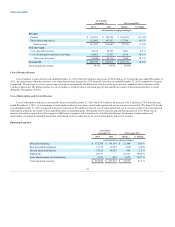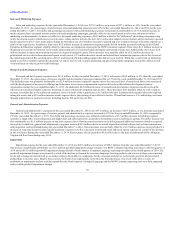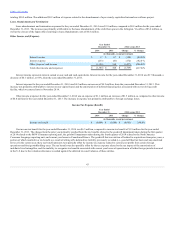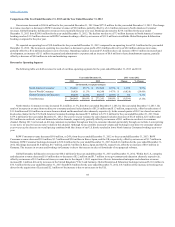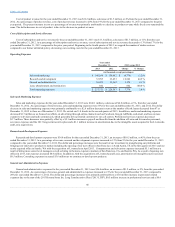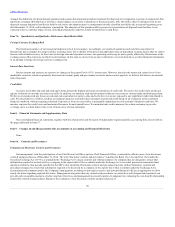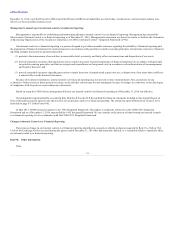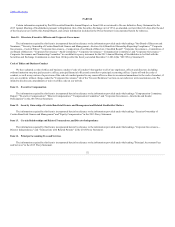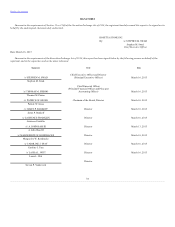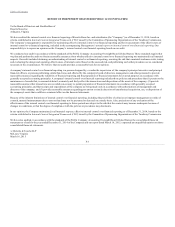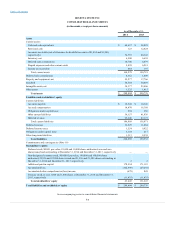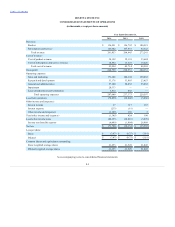Rosetta Stone 2014 Annual Report Download - page 52
Download and view the complete annual report
Please find page 52 of the 2014 Rosetta Stone annual report below. You can navigate through the pages in the report by either clicking on the pages listed below, or by using the keyword search tool below to find specific information within the annual report.
Table of Contents
changes the definition of a discontinued operation and requires discontinued operations treatment for disposals of a component or group of components that
represents a strategic shift that has or will have a major impact on an entity’s operations or financial results. ASU 2014-08 is effective prospectively for all
disposals (except disposals classified as held for sale before the adoption date) or components initially classified as held for sale in periods beginning on or
after December 15, 2014; earlier adoption is permitted. The adoption of this guidance affects prospective presentation of disposals and therefore, is not
expected to have a material impact on our consolidated financial condition, results of operations or cash flows.
Foreign Currency Exchange Risk
The functional currency of our foreign subsidiaries is their local currency. Accordingly, our results of operations and cash flows are subject to
fluctuations due to changes in foreign currency exchange rates. The volatility of the prices and applicable rates are dependent on many factors that we cannot
forecast with reliable accuracy. In the event our foreign sales and expenses increase, our operating results may be more greatly affected by fluctuations in the
exchange rates of the currencies in which we do business. At this time we do not, but we may in the future, invest in derivatives or other financial instruments
in an attempt to hedge our foreign currency exchange risk.
Interest Rate Sensitivity
Interest income and expense are sensitive to changes in the general level of U.S. interest rates. However, based on the nature and current level of our
marketable securities, which are primarily short-term investment grade and government securities and our notes payable, we believe that there is no material
risk of exposure.
Credit Risk
Accounts receivable and cash and cash equivalents present the highest potential concentrations of credit risk. We reserve for credit losses and do not
require collateral on our trade accounts receivable. In addition, we maintain cash and investment balances in accounts at various banks and brokerage firms.
We have not experienced any losses on cash and cash equivalent accounts to date and we believe we are not exposed to any significant credit risk related to
cash. We sell products to retailers, resellers, government agencies, and individual consumers and extend credit based on an evaluation of the customer's
financial condition, without requiring collateral. Exposure to losses on receivables is principally dependent on each customer's financial condition. We
monitor exposure for credit losses and maintain allowances for anticipated losses. We maintain trade credit insurance for certain customers to provide
coverage, up to a certain limit, in the event of insolvency of some customers.
Our consolidated financial statements, together with the related notes and the report of independent registered public accounting firm, are set forth on
the pages indicated in Item 15.
None.
Evaluation of Disclosure Controls and Procedures
Our management, with the participation of our Chief Executive Officer and our Chief Financial Officer, evaluated the effectiveness of our disclosure
controls and procedures as of December 31, 2014. The term "disclosure controls and procedures," as defined in Rules 13a-15(e) and 15d-15(e) under the
Securities Exchange Act of 1934, as amended (the "Exchange Act"), means controls and other procedures of a company that are designed to ensure that
information required to be disclosed by a company in the reports that it files or submits under the Exchange Act is recorded, processed, summarized and
reported, within the time periods specified in the SEC's rules and forms. Disclosure controls and procedures include, without limitation, controls and
procedures designed to ensure that information required to be disclosed by a company in the reports that it files or submits under the Exchange Act is
accumulated and communicated to the Company's management, including its principal executive and principal financial officers, as appropriate to allow
timely decisions regarding required disclosure. Management recognizes that any controls and procedures, no matter how well designed and operated, can
provide only reasonable assurance of achieving their objectives, and management necessarily applies its judgment in evaluating the cost-benefit relationship
of possible controls and procedures. Based on the evaluation of our disclosure controls and procedures as of
50



